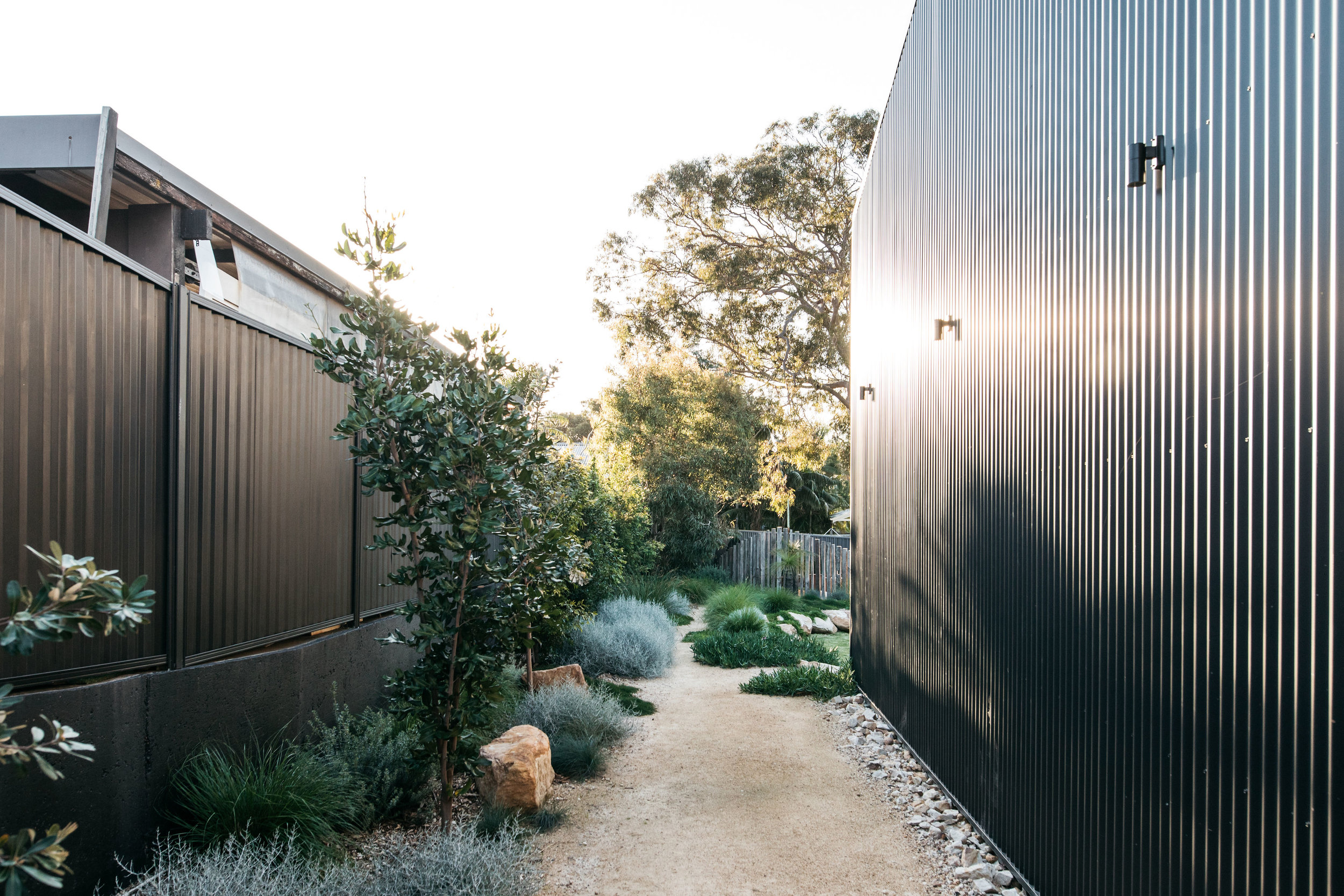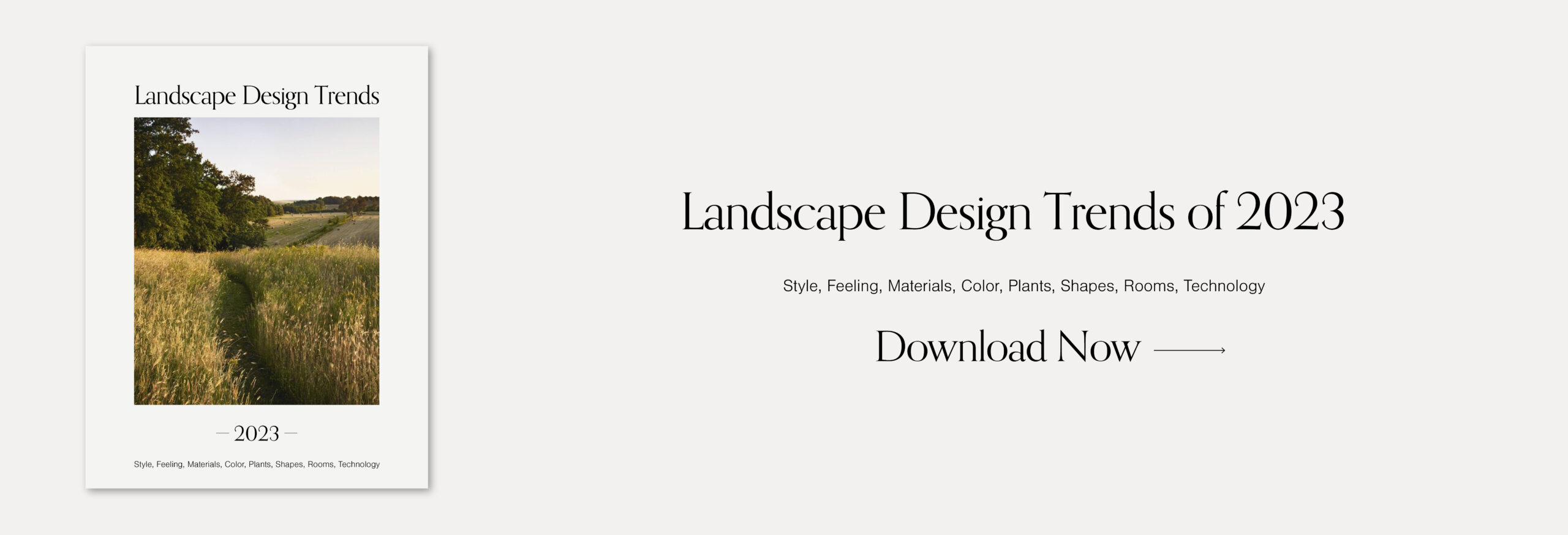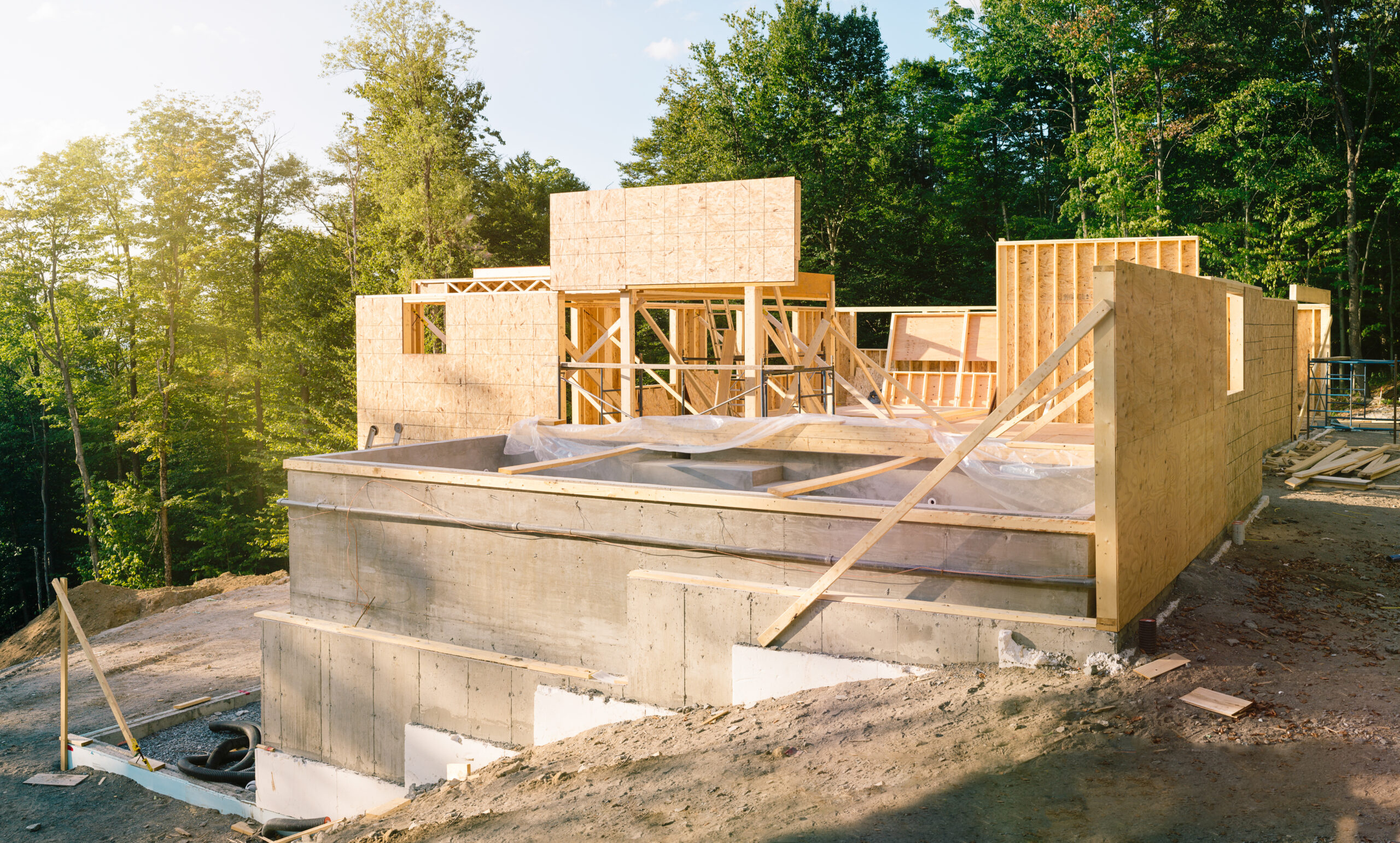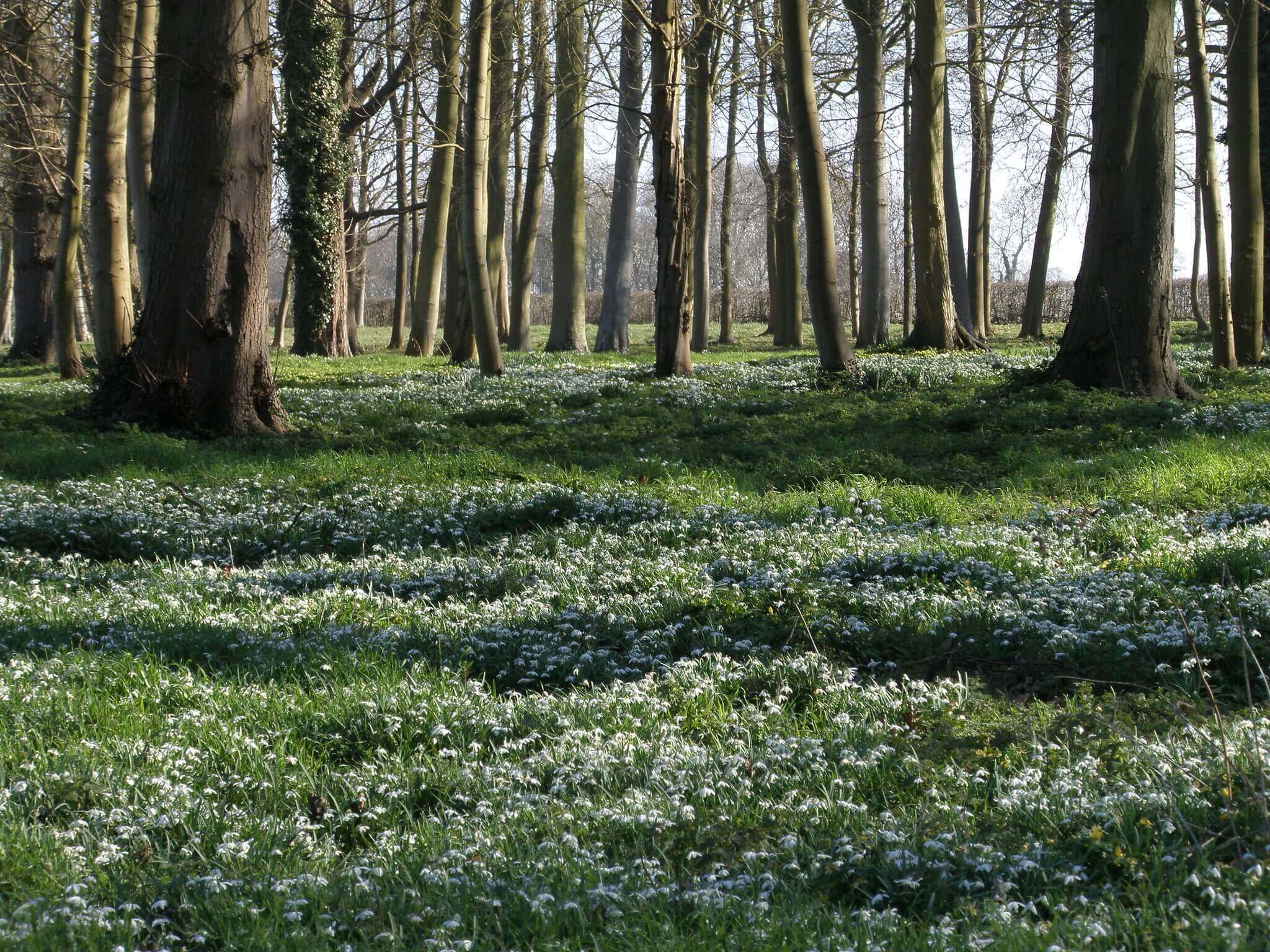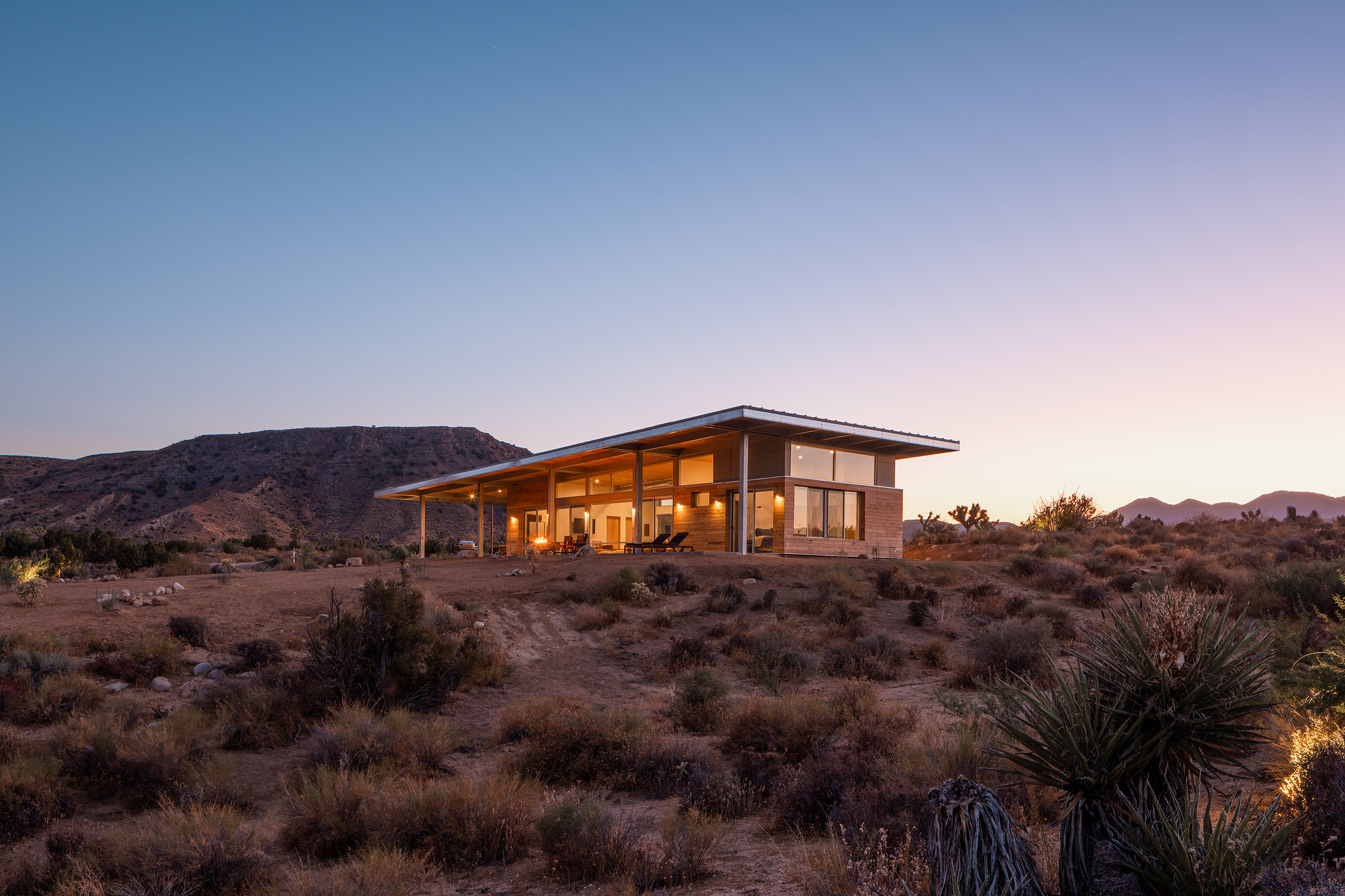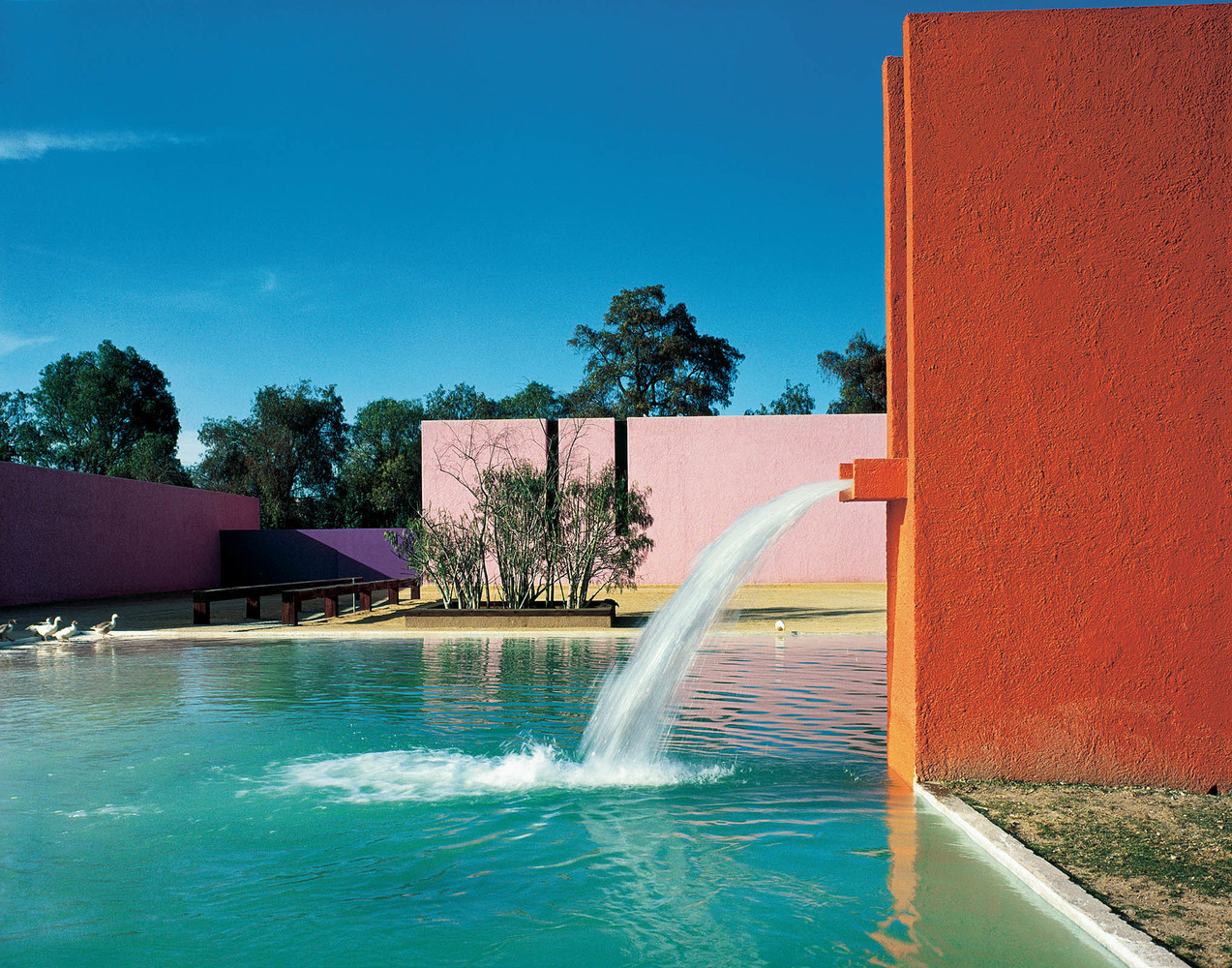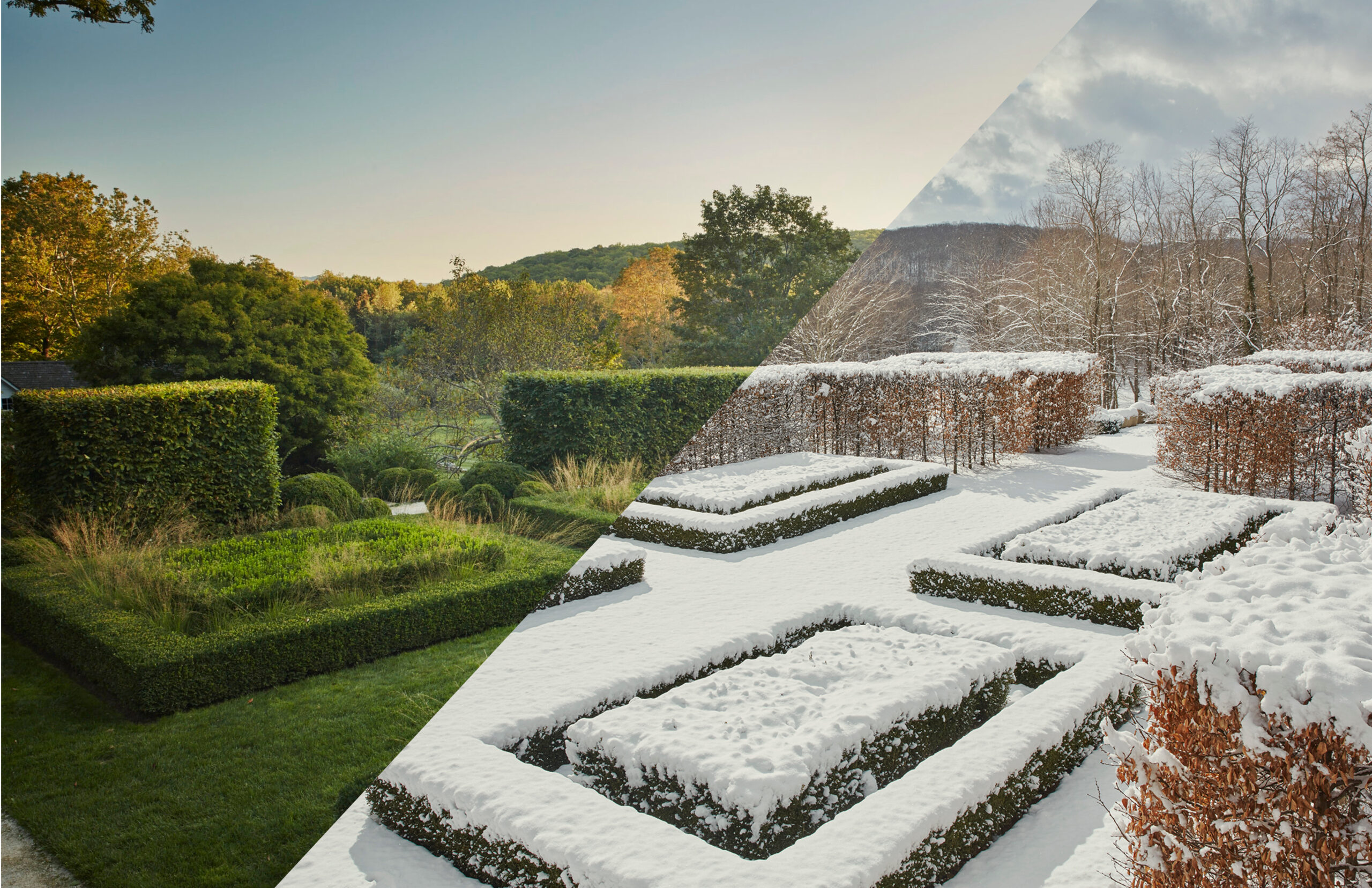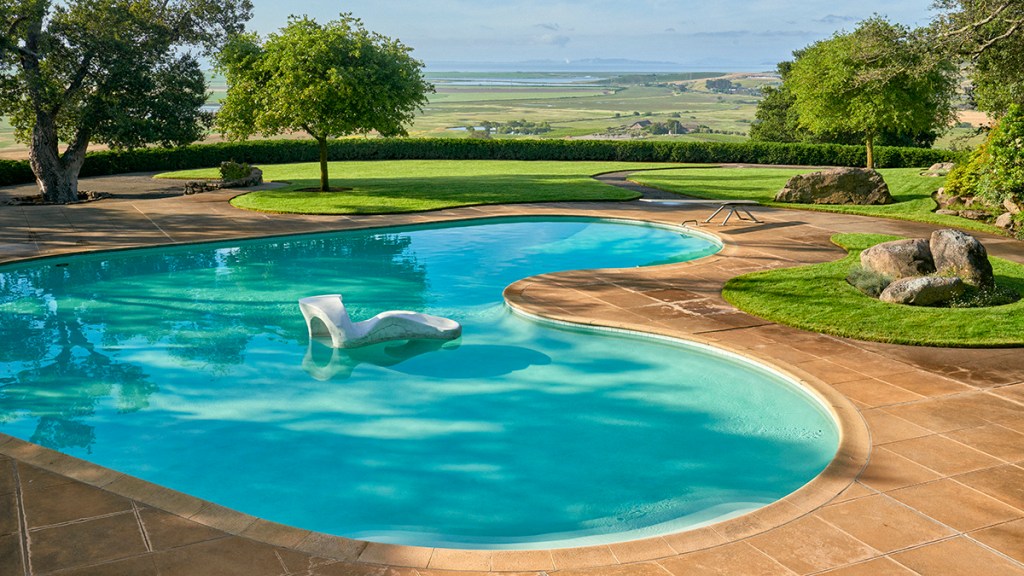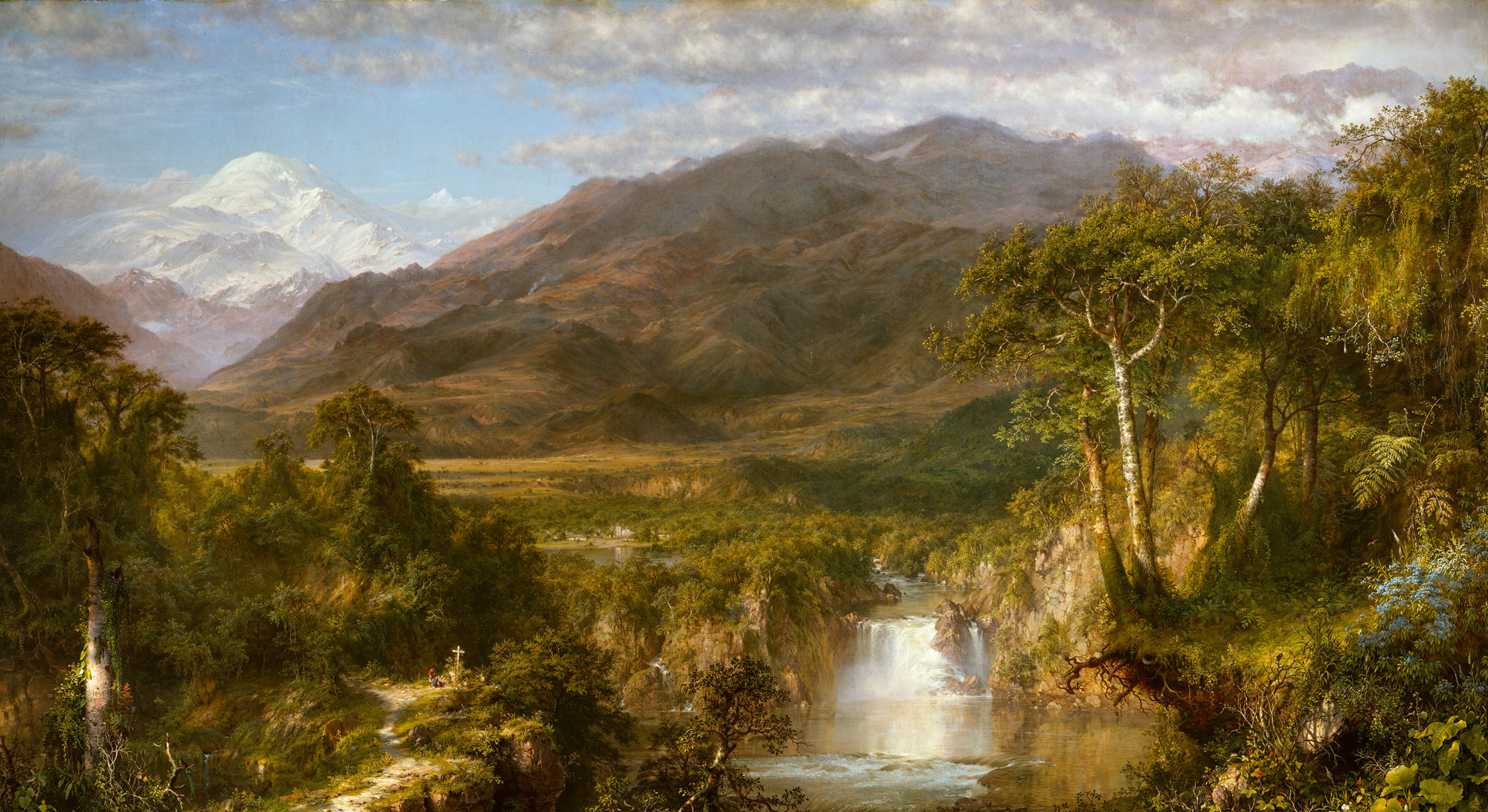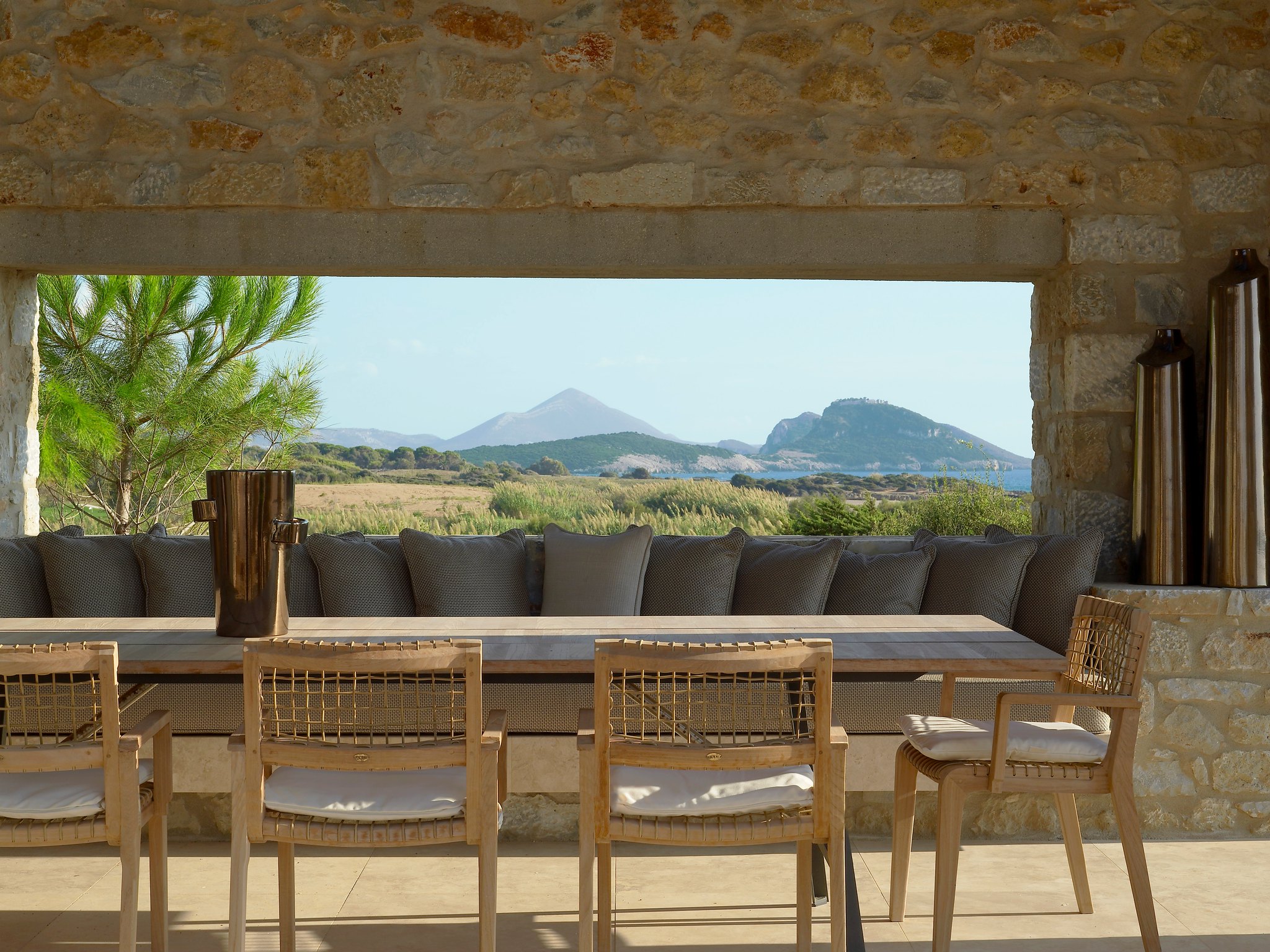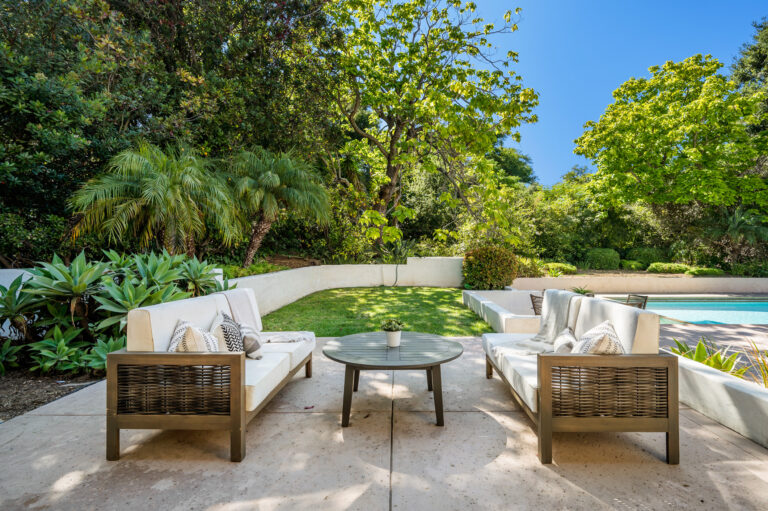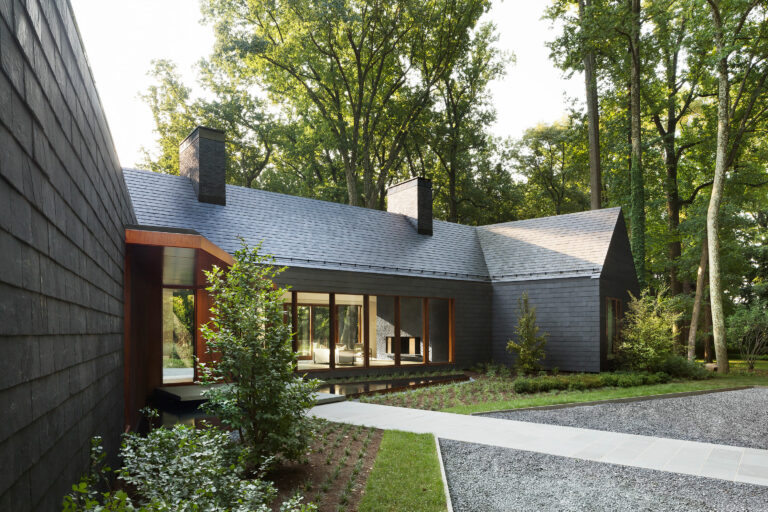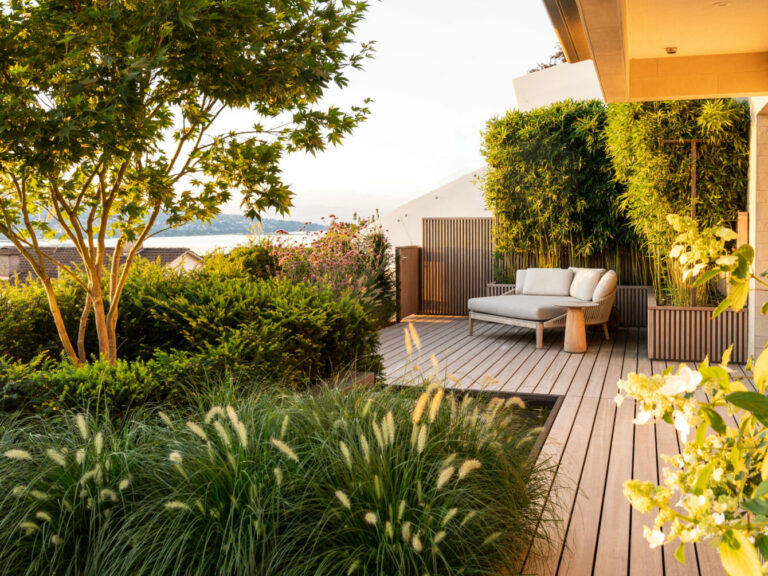Landscape nurseries and stone yards can provide a multitude of stone options that can be used for paving applications. Natural stone utilized for paving is available in a wide variety of color, shape and size providing the designer with a multitude of options that have the ability to transform a space.
With such varying characteristics, it is critical to understand the specific stone types and their possible applications. The characteristics of each stone type has the ability to enhance a landscape design and contribute to the overall design atmosphere.
Material selection is a critical step in the design process and should be driven by your overall design goals. The key to selecting the appropriate stone material is understanding how it will be used to compliment the overall design intent.
Stone paving material intended to be used on a picturesque winding garden path should look and function much different then stone paving selected for a high traffic accessible walkway. Creating material boards and requesting material samples from providers are valuable steps that can assist designers in selecting the most appropriate stone material.
Loose Pebble/Gravel

Used as a paving material, loose untreated pebble and gravel has an abundance of design advantages. Pea gravel, ¼” chip gravel, granite mulch, ¾” clear stone, ¾” landscape stone, and ⅜”gravel stone are some of the most commonly found loose pebble and gravel stone options. These aggregate types come in varying solid colors as well as color blends allowing you to curate the material to the surrounding design.
In order to select the right stone, it is critical to understand how and where the material will be used.For example, ¼” chip gravel can be compacted to create a smooth walking surface. Although not creating an accessible walking surface, ¼” chip gravel creates a walking surface that is easily walked-on, maintained and at a cost-friendly price point.
Pea gravel and ⅜”gravel stone is an aggregate that has a unique sound quality when walked on. The sound of gravel beneath a pedestrian’s foot is not only a pleasing sound for an intimate garden space but also slows down the walking speed of users. Having the ability to dictate the speed at which visitors walk a space is a powerful design tool that can drastically impact how a space is enjoyed.
Utilizing ¾” clear stone and ¾” landscape stone can create the opposite effect on a walkway. Its naturally varying shape and size creates a non-uniform walkway that discourages slow walking. This material can be used to create service roads, walkways and access points that are not meant to be used by everyone. The composition of this material makes it an ideal drainage material and can be utilized to handle surface run-off and water pooling. ¾ clear stone does not contain fine loose material such as stone dust or sand. The absence of fine material allows water to easily drain through, making this an ideal material choice for drainage systems like a french drain.
Loose pebble and gravel come in varying color spectrums that can both compliment and become a focal point in your design. The unique characteristics of varying stone types can contribute to creating an intimate space while also contributing to solving larger infrastructure concerns. Speaking directly with local landscape stone yards and outlining the characteristics of the stone you are looking for is a fool proof method to ensure you receive the most appropriate material for your design.
Top Books in Landscape Design
Irregular Natural Paving Stone
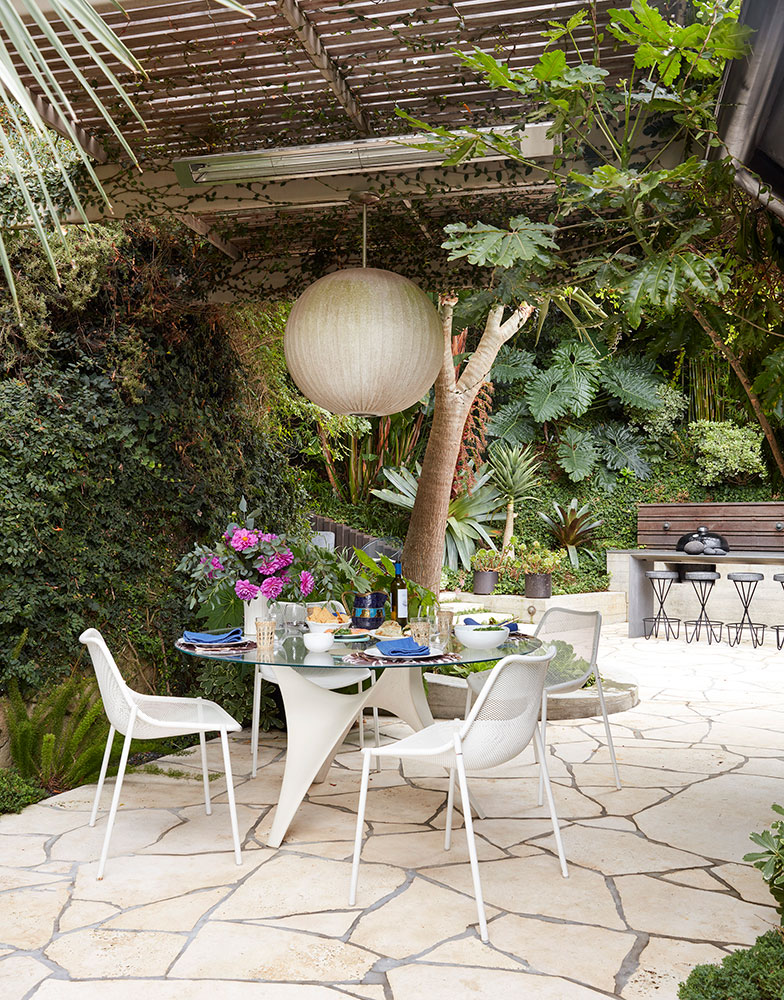
Irregular stone paving materials are typically found in stone yards and landscape nurseries with varying stone types. These stone types offer a range of texture and color and are versatile with an abundance of applications. These materials can be utilized for recreational walking trails, patios, driveways and even garden walkways.
Irregular stone materials create an organic look to a backyard patio. Once the stone pieces are puzzled together, various types of medium can be used between joints. These joints can be filled with loose gravel, sand or even mortar depending on the look and area of the project.
As a material, irregular natural stone paving has several ecological advantages. This material promotes the percolation of surface run-off, thus promoting ground-water recharge, an ecologically friendly solution.
This type of stone application requires hours of labor piecing irregular pieces together, which can drive construction costs higher. In addition, both sides of this stone are rough, maker it harder and more challenging for masons and constructions crews to level individual stones.
Click here to read about a “Permeable Paver Product to Help with Stormwater Management”.
Cut Solid Natural Paving Stone
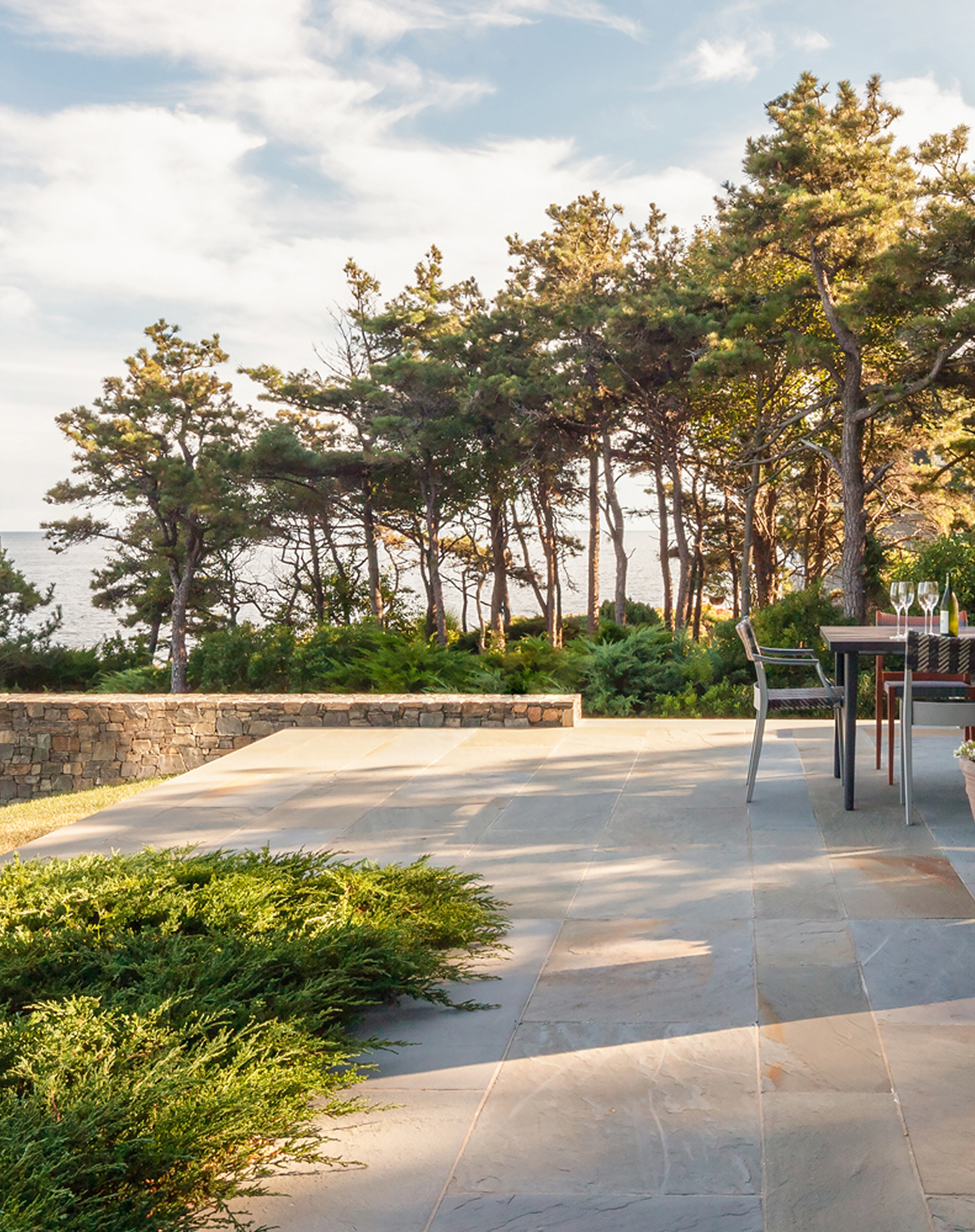
Solid natural stone paving is not to be confused with the use of unit pavers, brick or tile. Where unit pavers are a manufactured material, solid stone is a naturally occurring product that typically has to be cut from a quarry before installation. Utilizing solid stone as a paving material is not a cost friendly design decision as the material is both difficult to install and have delivered.
Despite being an expensive stone option, solid stone brings a unique material and color quality to a design. Solid stone can be purchased under the following popular landscape terminology; Fieldstone, Armour stone, Granite slab, Cobblestone and Cut Stone.
The above mentioned stone types all come in varying sizes and color variations. Visiting a stone yard to see the variation in color and scale is the best way to determine if it is suitable in your design. Using materials such as granite slab or armor stone to create walkways, steppingstones, retaining walls or stone cladding is a way to introduce a focal point in larger scale designs. For smaller sites, using a more intimately sized stone such as cobble or cut is typically the more appropriate option.
Solid stone can be installed on a well prepared aggregate base or it can also be mortared in place, commonly referred to as a wet lay. Once the aggregate base has been prepared designers have the ability to choose from a wide array of laying patterns that will complement the surrounding design.
Click here to learn more about “Dry vs. Wet-Laid” Patios at Unilock.
A running bond pattern requires little to no material cutting resulting in no product wastage. This is ideal for DIY patios and curved walkways. A herringbone pattern is a labor intensive pattern but it offers a durable contemporary style ideal for driveways. Finally a basket weave pattern is an extremely complimentary pattern for brick houses. This pattern utilizes alternating vertical and horizontal stones that can create a stunning focal point for a garden courtyard or entryway.
Online Courses in Landscape Design
Conclusion
Utilizing natural stone paving in your design presents a limitless number of applications. Combining materials and stone types can contribute to creating a uniquely identifiable space.
To select the most appropriate stone for your design, it is best to see the material for yourself to understand its specific variations in both size and color. Product samples are often readily available from suppliers upon request. Selecting your material pallet early on in your design will help you navigate other design decisions such as walkway locations, plant selection and plant location.
